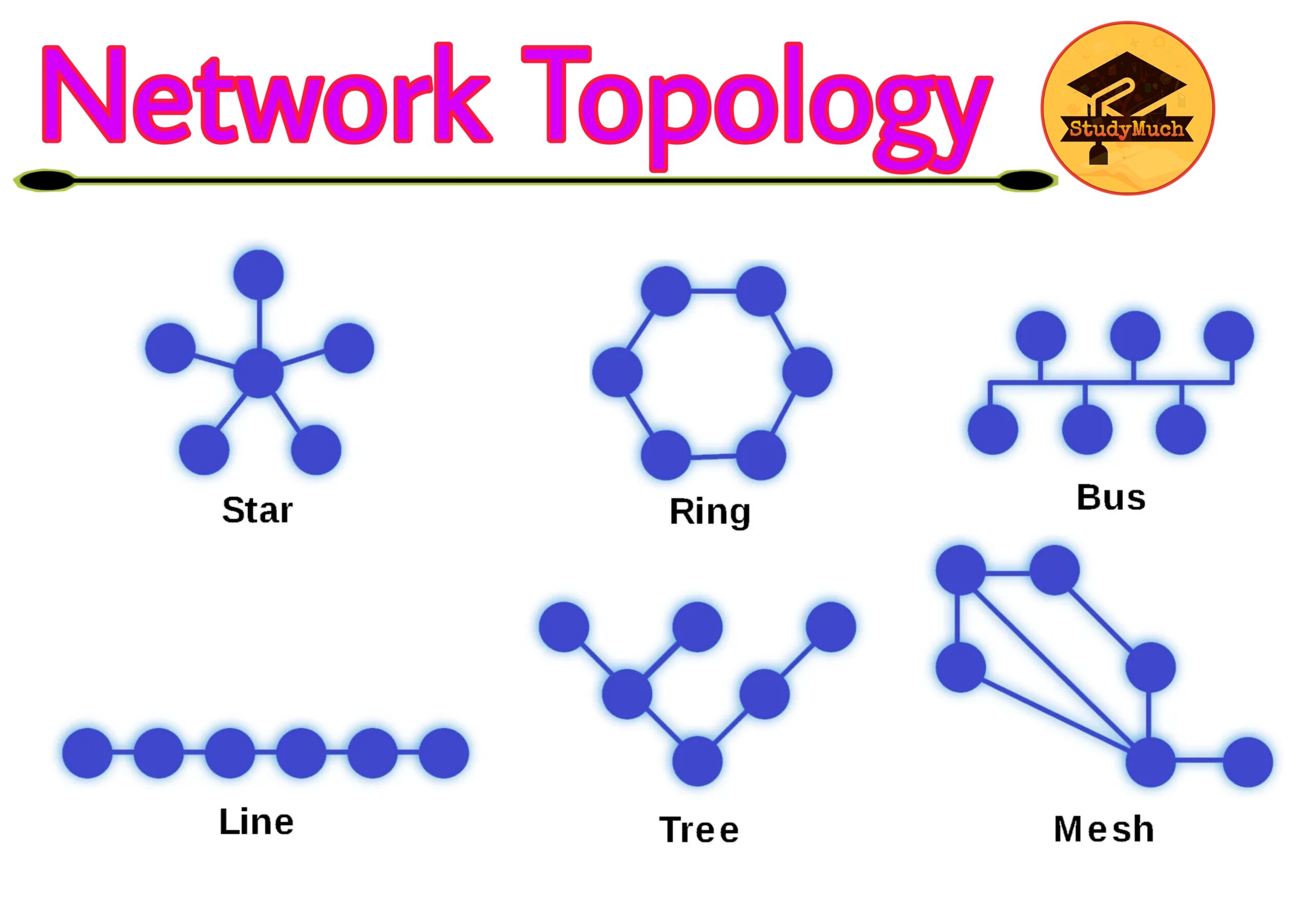Network Topology

Network Topology
In this tutorial you will learn about the Network Topology, its Definition, types of topologies and what is Topology. So, guys start the learning.
What is Network Topology?
A Network Topology is the arrangement of a network, nodes and connecting lines. The Physical and the Logical Topology are the types of network topology.
It is the arrangement of the elements of a communication network. Network topology can be used to define or describe the arrangement of various types of telecommunication network, including command and control radio networks and computer networks.
Physical Topology
The physical topology refers to the geometric layout of the interconnected structure of a local area network. The method employed to connect the physical devices on the network with the cables. Physical Topology is the placements of the various components of a network (e.g., device location and cable installation).
Types of Physical Topologies are included below;
- Bus Topology
- Ring Topology
- Mesh Topology
- Tree Topology
- Star Topology
- Hybrid Topology
Bus Topology

In the Bus topology system, every computer and network are connected by using a single cable. The cable is known as Bus. It transmits the data from one end to another end only in a single direction. When it has exactly two endpoints, then it is called Linear Bus Topology. A network that uses a bus topology is referred to as a bus network. Bus networks were original form of an Ethernet Network.
Ring Topology

In Ring Topology, the network nodes are connected in a closed loop configuration. Each node has directly connected with its adjacent node on both sides. The others are indirectly connected and the data passing through one or more intermediate nodes.
- Dual Ring Topology – When the transmission is bidirectional by having two connections between each network node, it is called Dual Ring Topology. It is a network redundant topology where nodes are connected using two concentric rings with four branches. In this topology if one ring fails, the second ring can act as a backup, to keep the network up.
Tree Topology

In Tree Topology network, two or more-star networks connected with a root node and all other nodes are connected to it forming a hierarchy. It is also called hierarchical topology. It should at east have three levels to the hierarchy. This type of topology used in wide Area network. Tree topology is valued for its scalability and accessibility for troubleshooting.
Star Topology

In a Star Topology, all the nodes are connected to a hub through a cable. This hub is the central node. The data can send from one node to another through the hub. Hub acts as a repeater for data flow. It can be used twisted pair, Optical Fiber or coaxial cable.
Mesh Topology
Int Mesh Topology, every node carries traffic only between the two nodes it connects (point to point connection). Mesh has n(n-1)/2 physical channels to link n devices.

Examples; – Each telephone regional office needs to be connected to every other regional office.
There are two techniques to transmit data over the Mesh Topology. They are Routing and Flooding.
- Routing – The nodes have a routing logic to direct the data to reach the designation using the shortest distance.
- Flooding – The data is transmitted to all the nodes in the network, hence no routing is required.
Types of Mesh Topology; –
- Partial Mesh Topology – in this topology, some of the nodes are connected to all nodes and some nodes are connected only to some nodes.
- Full Mesh Topology – in this topology, every node is connected to each other. It is the group of two or more topologies. It is a scalable topology and it can be expanded easily and it is reliable.
Logical Topology
Logical Topology denotes how the signals transmitted from node to node across the system. It is a concept in networking that defines the architecture of the communication mechanism for all nodes in a network.
Types of Logical Topologies are included below;
- Broadcast
- Token Passing
Broadcast – In broadcast there is no need for instructions. Ethernet is working in Broadcast transmission.
Token Passing – In this topology, electron token is passed to each node. When a token is received by the node, the node can send data on the network. Token Ring and Fiber Distributed Data Interface (FDDI) are using Token Passing. ARCNET (Attached Resources Computing Network) is token passing on a bus topology.
So, in this tutorial you read all about the Topology, its definition, types of Topologies etc. I hope you all read this tutorial well and learn something amazing about this topic. If you have any doubt about this tutorial, you can ask in the comment section.
Read Also –



4 Comments
creek gate io · May 9, 2023 at 7:31 pm
Your article made me suddenly realize that I am writing a thesis on gate.io. After reading your article, I have a different way of thinking, thank you. However, I still have some doubts, can you help me? Thanks.
gate.io türkiye · May 9, 2023 at 8:38 pm
Your article made me suddenly realize that I am writing a thesis on gate.io. After reading your article, I have a different way of thinking, thank you. However, I still have some doubts, can you help me? Thanks.
tlover tonet · May 6, 2024 at 6:46 am
Hey there! Do you use Twitter? I’d like to follow you if that would be ok. I’m absolutely enjoying your blog and look forward to new updates.
smortergiremal · November 3, 2024 at 6:53 pm
Hi there! This post couldn’t be written any better! Reading through this post reminds me of my previous room mate! He always kept talking about this. I will forward this article to him. Pretty sure he will have a good read. Thank you for sharing!